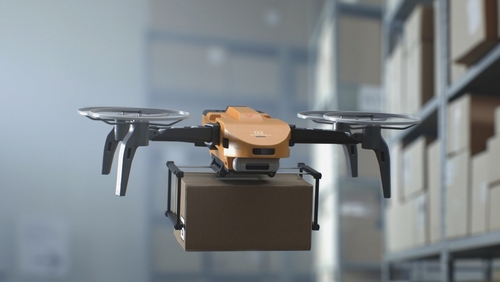The logistics sector in Brazil shows a trajectory of expansion for the coming years. According to analysis by Mordor Intelligence, the global freight and logistics market reached $6.03 trillion in 2024 and is expected to reach $7.54 trillion by 2029, representing an average annual growth rate of 4.57%.
In the national scenario, the data reflects the positive trend. The Brazilian Association of Logistics Operators (ABOL) reported that transportation demand grew by 3.6% last year, with total spending exceeding R$940 billion, an increase of nearly 7% compared to the previous period.
In an interview with the press, the country manager of Vanderlande Brazil, Adriano Santos, attributes the growth to the expansion of e-commerce, which demands more agile logistics services. This moment in the sector attracts investors interested in diversifying portfolios, especially those looking to start investing in segments with solid return prospects.
Automation drives transformation in the sector
The study by Mordor Intelligence projects that the logistics automation market alone, valued at $75.24 billion, is expected to grow by 9.9% annually until 2029, reaching $120.63 billion. The expectation is that the expansion will be driven by the growth of e-commerce and companies’ pursuit of reducing operational errors and increasing operational speed.
A practical example of this transformation appears in the case of Massimo Consulting, which developed an automation tool for a multinational in the retail sector. The project resulted in a 60% reduction in order processing time already in the first phase of implementation, based on the use of Robotic Process Automation (RPA) integrated with the existing ERP system, eliminating manual corrections that impacted operational efficiency.
“Automation and AI are transforming logistics in various ways: route optimization, warehouse automation, predictive inventory management, and increased operational security,” defines Adriano Santos.
Brazilian distributors bet on productivity
The research How Possible Happens, conducted by Infor with 3,600 companies from 15 countries, reveals that 81% of Brazilian distributors expect to increase productivity by up to 20% in the next three to five years.
Simultaneously, 78% plan to expand technology investments in the same proportion during the period. The survey also found that 79% of Brazilian distributors consider the use of advanced technologies as a “key factor for future success.”
The research also highlighted structural changes post-pandemic. Companies have begun to manage the supply chain more refinedly, opting for technological investments in the face of a shortage of qualified labor.
At the same time, companies in the sector face operational challenges, such as route optimization and fuel cost control, issues that directly impact business profitability. In this scenario, solutions like toll tag emerge as strategic tools for efficient fleet management and reduced operational expenses.
E-commerce drives demand for fast deliveries
The growth of e-commerce remains the main driver of logistics expansion. Data from Cobli show that the Brazilian freight and logistics market, estimated at $104.79 billion in 2024, is expected to reach $129.34 billion by 2029.
The growing demand for fast and personalized deliveries has favored carriers specializing in small volumes. This modality stands out by using smaller vehicles—motorcycles, vans, and utility vehicles—that ensure greater flexibility and reduced operational costs compared to large cargo transportation.
Among the challenges faced by carriers are: intense competition, management of operational costs, and the need for investment in technology.
The job market shows promise
The research “Industrial Job Map 2025-2027” by the National Industry Observatory (ONI) reveals that logistics and transportation will be the sectors with the highest demand for professionals until 2027, with projections exceeding 8 million formal positions.
Data from the National Employment Bank (BNE), released by ABOL, show an accelerated pace of hiring between January and October 2024. The segment recorded 66.7 thousand opportunities, an increase of 94.7% compared to the same period the previous year.


